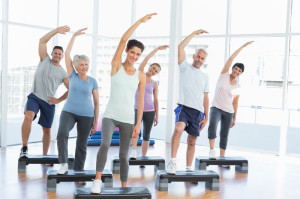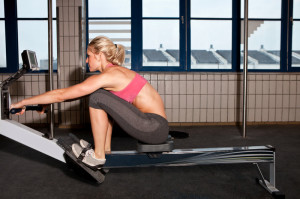The question of how to warm up effectively so you can get the most out of your workout without injury is something that confuses a lot of people.
Static and dynamic stretching are both important parts of any good warm-up routine, but do you understand why we do them, and how to structure a warm-up so that you are ready to exercise, and so that the warm-up helps to protect you from injury?

Warming up is important because it helps to increase blood flow to your muscles, and quite literally warms your body up. Your internal body temperature does not increase a lot when you warm up, but you do want to raise it slightly and dilate your blood vessels, improving blood flow to the muscles you will use in your exercise routine and helping to loosen all those muscles, ligaments and tendons.
Dilation of the blood vessels allows more blood to flow through them, which means your muscles have an improved oxygen supply, and also waste products from metabolic activity are carried away more readily.
In addition, warming up helps to ensure your muscles are more flexible, so you are less likely to injure yourself performing sports related movements. If you plan to engage in a high performance activity, warming up is essential.
So, what does a good warm-up include?
A warm-up should increase your heart rate, encourage you to start breathing more heavily to increase respiratory capacity and also elevate your overall metabolic level.
This means nutrients will be delivered to your muscles, and your joints will be lubricated too. All of these factors are essential for both improved performance and injury prevention.
Ideally, your warm-up should be sport or exercise specific. Some exercises, such as light jogging, calisthenics or general stretching work for any sport, but you should make sure that the movements you perform in the warm-up reflect the movements you will perform in the sport exercise program you are about to perform.
Typically, you should schedule at least ten minutes for your warm-up. Begin with low intensity aerobics, include dynamic stretching and static stretching, and perform low-intensity movements that reflect the exercises you will be doing in your main workout.
The non-stretching part of your warm-up should focus on low-impact exercise to elevate your heart-rate. A runner may start by walking briskly, then jogging. A tennis player may focus on low-impact swings. Martial artists may practice mobility drills, and weight lifters practice the movements they will be performing with just the bar.
Begin with slow, deliberate movements and gradually work to increase both the speed and the range of motion. Think of your warm up as both physical and mental preparation.

I have found for your normal daily workout at the gym either a rowing machine or cross trainer are excellent for warming up as both machines work your upper and lower body. Start slowly working up the pace as you warm up and keep it up for eight to ten minutes.
By gradually working to increase the intensity of your workout, you will ensure that you are ready for more intense exercise. Note that these sport-specific exercises are, in many ways, even more important than the static and dynamic stretching that so many warm-ups focus on.
Stretching can be performed at any time but I feel it is far more important done at the end of your workout. Gentle sport-specific warm-ups prepare you for an intense workout, and help to build the muscle memory you need to perform well.
Do not push yourself too hard during the warm-up but working up a light sweat will see you well prepared for what’s ahead. Your goal should be to prepare your body to run at peak performance, not test the limits of your performance before you even start your exercise program.
Leave a Reply